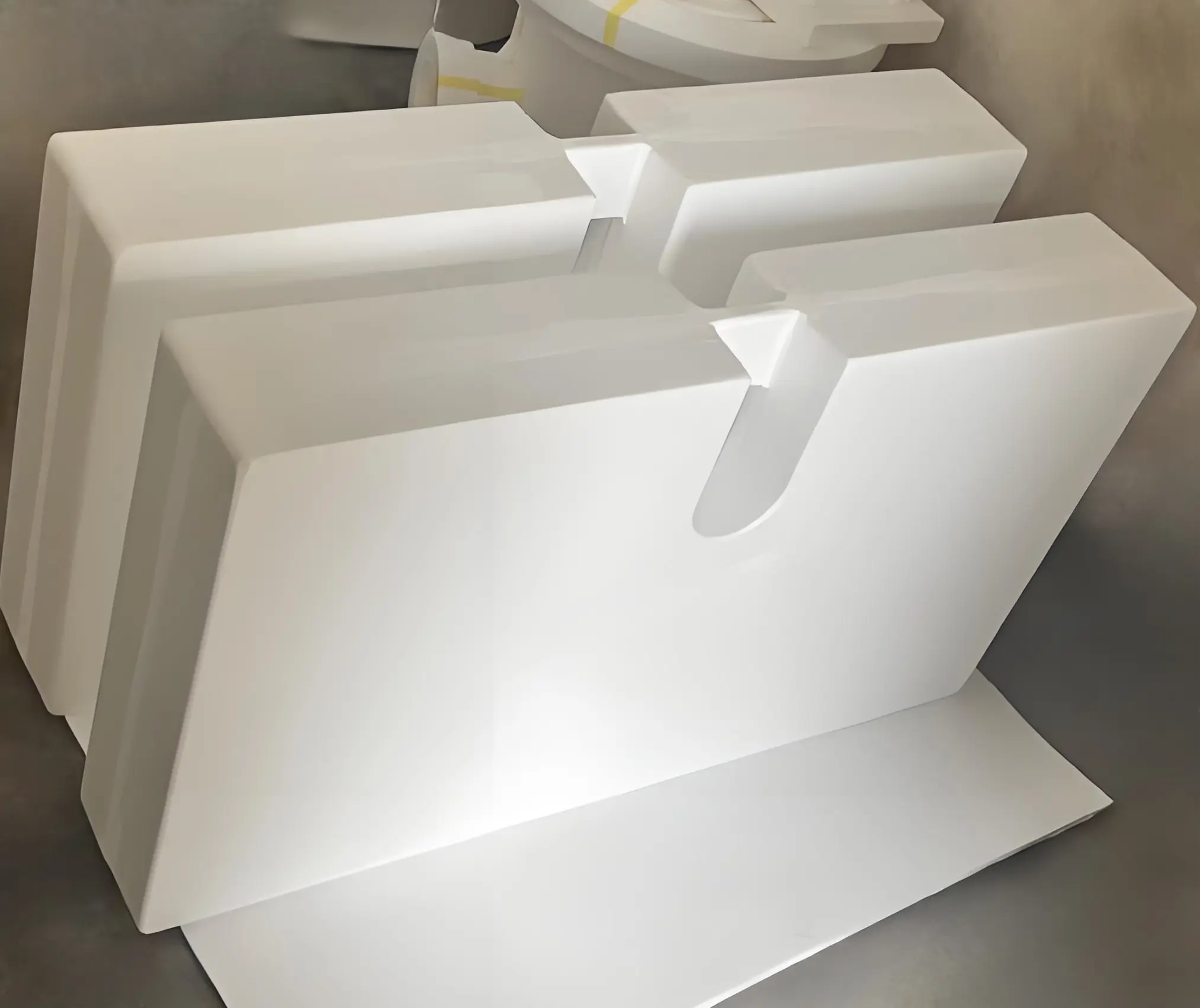Common defects and prevention measures of lost foam casting (I)
1. White defects
Causes
During the EPC pouring process, the mold sand is washed into the mold cavity by the fast-flowing molten iron and mixed with the molten iron, causing sand inclusion in the casting. After the casting is machined, sand particles are found on the processing surface, which are scattered or densely distributed like snowflakes. It is customarily called “white defects”. White defects will cause the casting to be scrapped and are very harmful in actual production. Therefore, they should be strictly avoided in production.
White defects often occur in the following places
(1) The pouring cup is made of quartz sand with water glass as a binder and hardened by blowing CO2. If CO2 is not properly controlled, the strength of the pouring cup is poor. During pouring, the sand particles in the cup are easy to fall off and enter the mold cavity.
(2) The connection between the pouring cup and the sprue is mainly due to the direct erosion of the pouring cup by the molten metal, which damages the coating and causes the mold sand to collapse.
(3) Due to the high height of the sprue, the metal liquid has a large drop during pouring, which damages the sprue coating and causes the sand to collapse and enter the cavity.
Solutions
(1) Prevent coating damage. Since the vacuum degree is high here, the air permeability of the coating here can be ignored. Increase the coating thickness and strength to enhance the barrier to the flow of sand.
(2) Principle of assembly outside the box. The model and the pouring system are assembled before packing.
(3) Principle of paint drying. If the pouring system must be connected during packing, the contact points must be sealed with paint, but the paint must be blown dry to prevent the wet paint from falling off.
(4) Avoid the molten iron facing the sprue during pouring. The molten iron should flow through the pouring cup for buffering before flowing into the sprue.
2. Mold damage
Mold damage is a common defect when using binderless sand. There are roughly three types.
2.1 Collapse of the upper part of the mold
The main reasons for the collapse of the upper part are:
① Because the sand box on the upper part of the mold is too thin, it is damaged under the buoyancy of the molten metal;
② It collapses due to the appearance of a cavity directly below it during the pouring process.
Combining the above two reasons, the solution to the collapse of the upper part should be to ensure that the upper part of the mold has enough sand intake.
2.2 The local cavity in the mold cavity causes the mold to be damaged
The cause is that the pouring process is not smooth, the front end of the molten metal is temporarily stagnant, and a cavity is formed between the foaming mold and the molten metal. The mold at the cavity is damaged by the heat of the molten metal.
The pouring scheme should be improved to ensure that the molten metal flows continuously to the mold cavity.
2.3 Mold damage caused by improper pouring system setting
When the casting is large, the mold is damaged because the inner runner is too short and the sand layer between the casting and the cross runner is too thin.
The pouring system can be improved, the inner runner can be appropriately extended, and the thickness of the sand layer between the casting and the cross runner can be increased to increase its strength.
3. Sand sticking
Causes
The main reasons for sand sticking are:
① The pouring temperature is too high. Practice has proved that properly increasing the pouring temperature is conducive to improving the surface quality of castings, and it is also very effective for insufficient pouring and surface wrinkles. However, if the pouring temperature is too high, sand sticking will occur;
② The filling compactness of the molding sand is not enough, such as the vibration equipment is not ideal, the air permeability of the coating is too high or the coating is too thin.
Solutions of Lost foam casting defects
① Reasonably control the vacuum degree and pouring temperature. Under the premise of ensuring smooth pouring, try to reduce the vacuum degree and pouring temperature as much as possible to inhibit the penetration ability of high-temperature metal liquid;
② Sand should be added in batches, the vibration equipment should be improved, the coating thickness should be appropriately increased, and the refractoriness of the coating should be improved.





